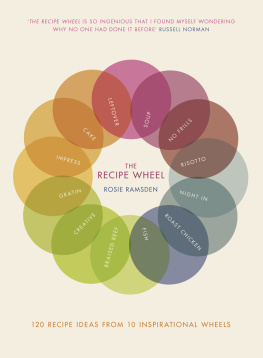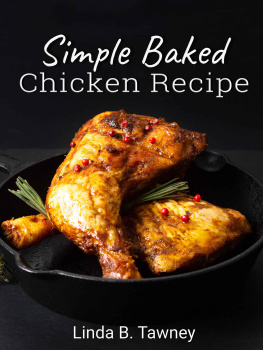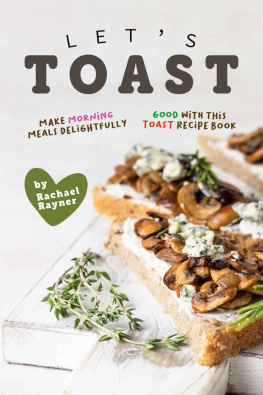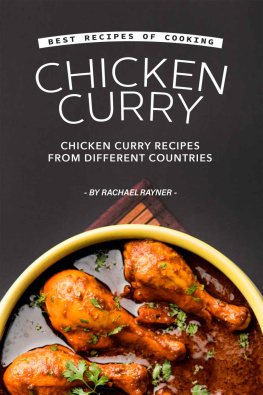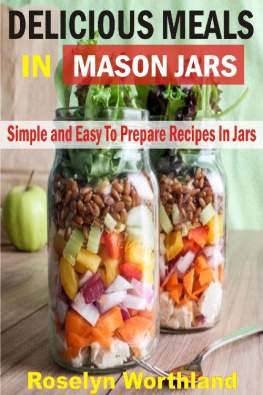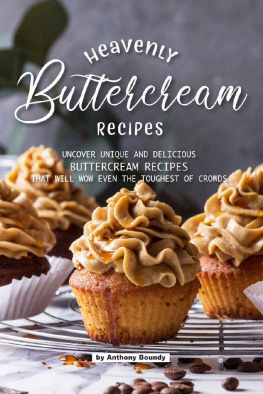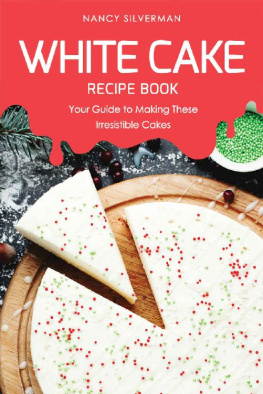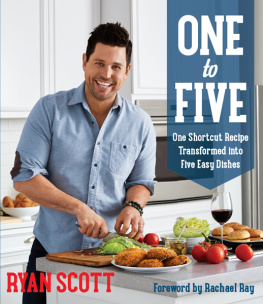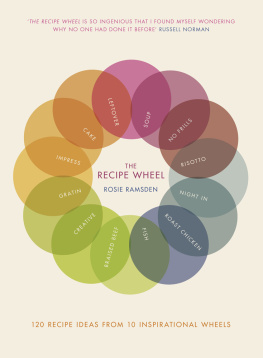CONTENTS
About the Book
Rosie Ramsden has invented a whole new way of planning meals: its called The Recipe Wheel.
She takes one simple, core recipe like risotto that sits at the centre of its own recipe wheel. From there lead spokes or threads to new, more developed recipes select your perfect dish by occasion, budget or time.
Each wheel is like a mind map, bringing flavours together and encouraging the reader to mix and match, adding to their own creativity and cooking skills. A basic roast chicken inspires dishes like chicken, mango and cashew nut curry; white bread goes into beetroot panzanella or butterbean, garlic and thyme on toast. Get creative with risotto with Barley risotto with chestnut and savoy. A simple sponge cake becomes three-tier vanilla raspberry cake, and custard is transformed into rhubarb treacle creme brulee or peach and amaretto trifle.
Its a completely original idea the book will be illustrated only with the recipe wheel graphics. This innovative cookbook, from an exciting new voice in cookery, turns the idea of the traditional recipe book on its head.
About the Author
Rosie Ramsden is a writer for Delicious magazine. She runs a monthly supperclub called The Secret Larder with her husband James. Rosie lives in London. The Recipe Wheel is her first book.
List of Recipes
FOR BADGE
Foreword
I like to draw and paint. Some days I paint fruit, some days vegetables; some days I draw mindless scribbles on Post-it notes. Scattered around my kitchen surfaces and marking pages in cookery books are torn bits of paper covered with scratchy mind maps, worn thin with coloured pen. Its the way I think about things. But mostly, its what inspires me to cook.
This book follows the route of these doodled mind maps. It explores recipe ideas visually. Each chapter in this book has its own mind map of sorts, its own recipe wheel. At the centre of each wheel lies a basic recipe and technique: bread; soup; risotto; roast chicken; braised beef; poached fish; gratin; wilted greens; sponge cake; custard. Nothing fancy. From these cores stem new, more developed ideas that all have the basic formula at their heart.
Each wheel puts a complete idea on to one page no endless flicking through giant books or scrolling slow webpages and draws on the simplicity of good, basic cooking. Recipes jump to varying levels of complexity and occasion, helping you decide what you really feel like making an effort with. Running along the spokes of the wheel are ways to help you choose what you want to cook. Select the dish you feel like by the length you want to go to No Frills or Get Creative or the occasion youre cooking for Feeding Friends or Cooking to Impress. Make a different risotto for every month of the year, tart up your roast chicken to impress friends, and share the love using up your leftovers the day after. The wheels make it simple to adapt recipes, substitute ingredients and play with flavours according to your mood.
Deciding what to cook can sometimes take hours sometimes it comes naturally and you have a culinary brainwave but I do enjoy the time spent thinking about it. There are a few key things that I bear in mind when building up a recipe.
The first is balance. Make sure there is a good balance of flavours and textures in the dish sweet, savoury, crunchy, smooth, salty and sour. Bitter things love sweetness, and you can balance salt with a squeeze of sour citrus or something acidic. Cream soothes spice, but can often enrich blandness. Salt greatly enhances flavour add it at the beginning and just at the end of cooking. And always have herbs at hand to freshen up leftovers.
The second is colour. Were lucky in the UK that each season brings with it a rainbow of colours that can liven up the way your food looks in the dish. Im not saying that food has to look good to taste good, but it makes cooking and eating more fun. Vegetables and fruit are where most of the colour comes from, and its purple veg that excites me most. Radicchio, beetroot, radishes, rhubarb. And for fruit, dark plums, figs, blackberries and cherries. Mix these into green and yellow and youll have a plate that looks and tastes beautiful.
The third is leftovers. Leftovers form an important part of this book and of many of my wheels and all of us have them. They are strange and wonderful things to work with, frugal, inventive and often surprising. Some of the recipe wheel ideas use the leftover core as their base. Its when you eat leftovers that you discover that some things taste much better the next day. Transformational.
This is chiefly a book about loving and understanding the food you cook. Its about discovering what you like and how to get there. And I encourage you to draw or imagine your own wheels. Start with the basics, and move forward to something a little different; or go on a wild tangent, knowing that youll never stray too far away from what you already know.
Recipe List
Simple White Bread
The bread wheel divides itself between recipes for fresh loaves and recipes for leftover loaves. It urges home bread-making and explores the fruitfulness of stale bread.
Making bread is an age-old therapy. The mixing of yeast with flour and water into a dough, kneading and watching it rise to double its size, is creative and calming and every time you do it, it gets easier, and tastier. It is this that excites me most: starting with practically nothing, and ending up with something that forms the basis of so many recipes.
Within its short lifespan there are innumerable possibilities: spread a fresh slice with butter; toast another and smother it with crushed, cooked beans; soak it, slightly stale, in creamy custard and bake; soften it in oil for salads; or crumble it, dry, on top of bubbling gratins. Knead, rest, bake, rest, slice, dunk, spread, whiz.
Knead to know. Notes on bread.
Mixing your bread with anything thats much hotter than lukewarm (3545C) will break down the yeast and stop it leavening the dough. Any warmer than 50C and the cells in the yeast start to die.
Salt is also a yeast-attacker. Make sure you activate your yeast with a little warm water before it mixes with the dough, and keep the salt to one side of your flour as you make a well so it doesnt mix in straight away.
Slow down your bread-making process by letting the dough rise in the fridge this is called retarding. When Im short of time, I make the dough at lunchtime, knead it, let it rise in the fridge until the evening, knead it again, shape it, and put it back in the fridge overnight for a second rise. In the morning, I bake.
Throw a glassful of water into the oven while you bake to create steam this will help to form a good crust.
Check your loaf is done by tapping it on the bottom to see whether it sounds hollow. If youre still not sure if the loaf is ready, stick a digital thermometer into its centre if it reaches an internal temperature somewhere between 80C and 100C its good to come out of the oven and cool.

